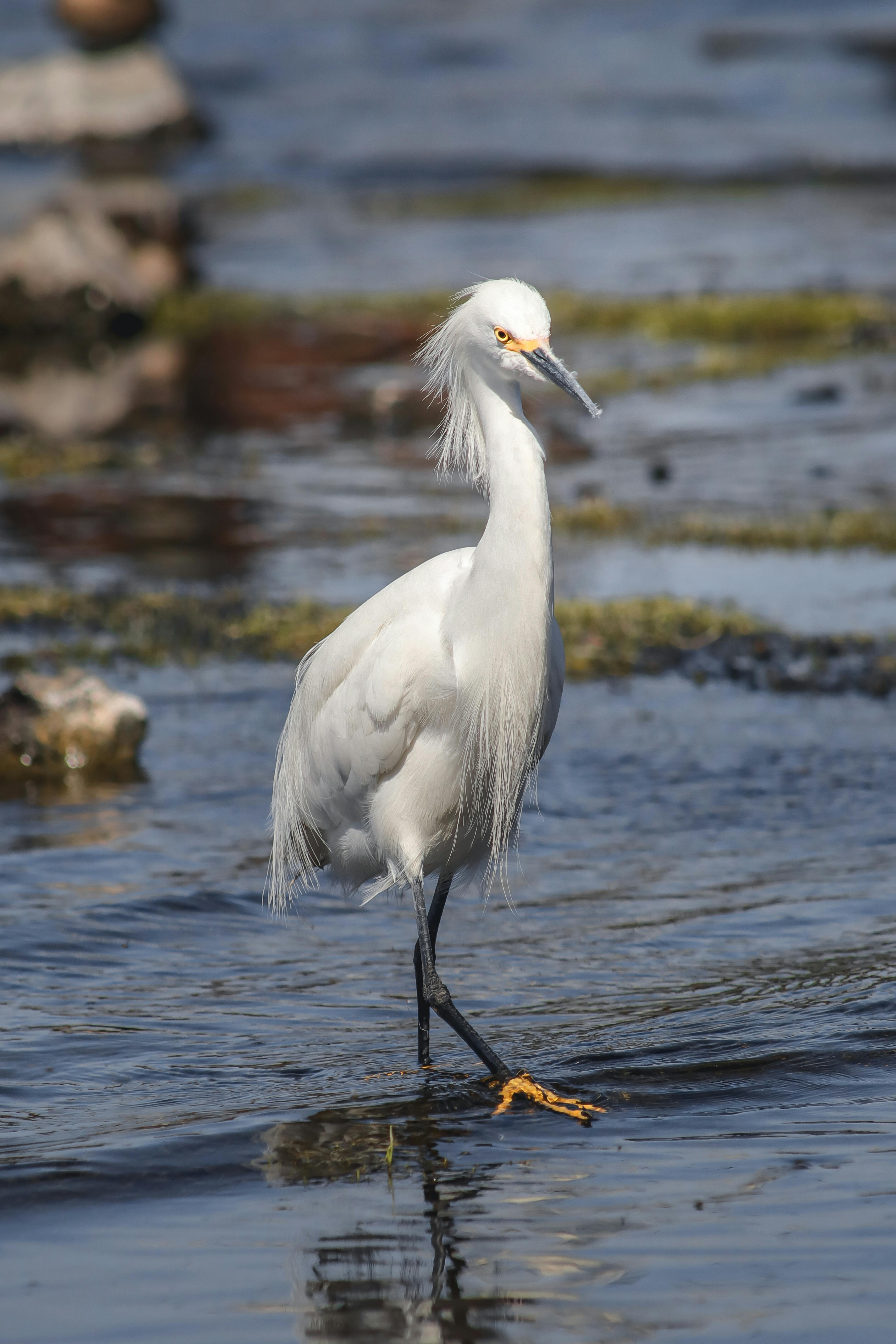Have you ever wondered about the hidden wildlife rehabilitation centers that tirelessly work behind the scenes to support and protect local fauna? These remarkable facilities serve as havens for injured or orphaned animals, providing them with the care and rehabilitation they need to thrive. From abandoned baby birds to injured mammals, these centers play a crucial role in preserving the biodiversity of our ecosystems. Join us as we uncover the extraordinary efforts of these hidden gems and explore their invaluable conservation work.

Introduction
Definition of wildlife rehabilitation
Wildlife rehabilitation refers to the care and treatment provided to injured, orphaned, or sick wild animals in order to restore them to health and prepare them for release back into their natural habitats. This process includes medical treatment, nourishment, and the necessary physical and emotional support until the animals are able to fend for themselves.
Importance of wildlife rehabilitation
Wildlife rehabilitation plays a crucial role in conserving and protecting local fauna. By providing the necessary care and support to injured or distressed animals, these centers significantly contribute to the preservation of biodiversity. They also help to maintain ecological balance by ensuring the survival of endangered species and promoting sustainable ecosystems.
Types of Wildlife Rehabilitation Centers
Rescue Centers
Rescue centers are facilities that primarily focus on the initial intake and emergency care of injured, orphaned, or sick animals. These centers often work closely with local animal control agencies and respond to calls for assistance in rescuing injured wildlife. Their main objective is to stabilize and provide immediate medical attention to animals in distress before transferring them to specialized rehabilitation centers.
Rehabilitation Centers
Rehabilitation centers are equipped to provide long-term care and treatment to a wide range of wildlife species. These centers specialize in nursing animals back to health and rehabilitating them until they are ready for release. They have specialized facilities, such as enclosures and specialized diets, to cater to the unique needs of different species. Rehabilitation centers often employ professional staff, including veterinarians and wildlife rehabilitators, to ensure the animals receive the best care possible.
Release Centers
Release centers are responsible for preparing animals for release back into the wild. They provide pre-release conditioning and necessary training to help animals develop the skills required for survival in their natural habitats. These centers often have large enclosures and access to open spaces where animals can practice flight, forage for food, and build strength before their final release.

Criteria for Hidden Wildlife Rehabilitation Centers
Location
Hidden wildlife rehabilitation centers are typically located in areas with minimal human disturbance and proximity to wildlife habitats. The centers need to provide a safe and natural environment for the animals to thrive during their rehabilitation process. Access to suitable release sites and protected areas is also an essential consideration when establishing these centers.
Facilities and Resources
Hidden wildlife rehabilitation centers must have adequate facilities and resources to accommodate the various needs of the animals in their care. This includes enclosures of different sizes and types to suit the needs of various species, specialized equipment for medical procedures, and ample space for exercise and rehabilitation activities. The availability of experienced staff and volunteers, as well as sufficient funding, is also crucial for the effective operation of these centers.
Expertise and Staff
Hidden wildlife rehabilitation centers require a skilled team of professionals, including veterinarians, wildlife biologists, and rehabilitators, who are trained in handling and caring for different species. These experts should have a deep understanding of wildlife behavior, medical treatment protocols, and the ecological requirements of the animals they care for. The collective expertise of the staff is vital in ensuring the successful rehabilitation and release of the animals.
Case Study: X Wildlife Rehabilitation Center
Overview of the center
X Wildlife Rehabilitation Center is a hidden gem located in a secluded area surrounded by diverse wildlife habitats. The center covers a vast area of land that includes forests, wetlands, and meadows, providing the perfect natural setting for the rehabilitation of numerous species.
Species supported by the center
X Wildlife Rehabilitation Center specializes in supporting a wide range of local fauna, including birds of prey, small mammals, reptiles, and amphibians. The center has enclosures and habitats designed to cater to the specific needs of each species, from spacious aviaries for raptors to cozy burrows for small mammals.
Success stories
Thanks to the efforts of X Wildlife Rehabilitation Center, numerous animals have been successfully treated and released back into the wild. One notable success story involves a red-tailed hawk named Ruby. Ruby was found with a fractured wing and was brought to the center for medical treatment and rehabilitation. After several months of specialized care and rehabilitation, Ruby regained her strength and was released back into her natural habitat. This success story and many others like it highlight the importance of hidden wildlife rehabilitation centers in giving injured animals a second chance at life.

Challenges Faced by Hidden Wildlife Rehabilitation Centers
Funding and Resources
One of the major challenges faced by hidden wildlife rehabilitation centers is the lack of adequate funding and resources. These centers heavily rely on donations and grants to cover the costs of medical supplies, veterinary care, and operational expenses. Limited funding often restricts the scale of operations and can hinder the centers’ ability to provide the best possible care for the animals.
Lack of Public Awareness
Despite their invaluable contributions to local fauna conservation, hidden wildlife rehabilitation centers often struggle with a lack of public awareness. Many people are not aware of the existence or importance of these centers, resulting in a lack of support and funding. Increased public awareness and education campaigns are necessary to highlight the vital role these centers play in protecting and rehabilitating local wildlife.
Legal and Regulatory issues
Hidden wildlife rehabilitation centers often face legal and regulatory challenges. These facilities must comply with various permits, licenses, and regulations to ensure the welfare and well-being of the animals in their care. Adhering to these requirements can be complex and time-consuming, and failure to do so can result in penalties or even closure of the center. Streamlining the legal and regulatory framework for wildlife rehabilitation can help alleviate these challenges.
Benefits of Hidden Wildlife Rehabilitation Centers
Preservation of local fauna
Hidden wildlife rehabilitation centers have a profound impact on the preservation of local fauna. By providing care and rehabilitation to injured or distressed animals, these centers play a crucial role in preventing the decline of wildlife populations. The successful release of rehabilitated animals back into their natural habitats contributes to the overall health and sustainability of ecosystems and helps maintain the balance of local flora and fauna.
Education and Awareness
In addition to their rehabilitation efforts, hidden wildlife rehabilitation centers also serve as important educational platforms. They offer opportunities for the public to learn about local wildlife, including their natural history, behavior, and conservation needs. Through guided tours, workshops, and outreach programs, these centers raise awareness about human-wildlife interactions, the importance of conservation, and the ways individuals can contribute to wildlife protection.
Contribution to Conservation Efforts
Hidden wildlife rehabilitation centers establish networks and partnerships with other conservation organizations, including zoos, wildlife research institutes, and government agencies. By collaborating with these entities, these centers actively contribute to broader conservation efforts. They share knowledge, exchange resources, and participate in research initiatives to enhance wildlife protection strategies and strengthen conservation programs.

Efforts to Expand Hidden Wildlife Rehabilitation Centers
Collaboration with Government Agencies
One of the key strategies for expanding hidden wildlife rehabilitation centers is through collaboration with government agencies. By working closely with wildlife departments, environmental agencies, and local authorities, these centers can tap into existing networks and resources. Collaboration facilitates the sharing of information, access to permits and licenses, and the establishment of partnerships to secure funding and support expansion initiatives.
Community Engagement and Volunteer Programs
Involving the community is vital for the growth and sustainability of hidden wildlife rehabilitation centers. Volunteer programs allow individuals to contribute their time and skills to help care for animals, clean enclosures, and assist with administrative tasks. Community engagement initiatives, such as workshops, guided tours, and wildlife-focused events, not only raise public awareness but also foster a sense of responsibility and ownership among local residents.
Fundraising and Grants
Expanding hidden wildlife rehabilitation centers requires significant financial resources. Fundraising campaigns can be organized to generate funds for infrastructure development, specialized equipment acquisition, and staff training. Seeking grants from environmental foundations and government agencies is another effective way to secure funding and support expansion projects. Proactive efforts in fundraising and grant applications are crucial for the long-term viability of these centers.
Future of Hidden Wildlife Rehabilitation Centers
Technological Advancements
Advancements in technology, such as remote monitoring systems and medical imaging techniques, are revolutionizing the way hidden wildlife rehabilitation centers operate. These technological tools enable real-time monitoring of animals, remote diagnosis of medical conditions, and more precise treatment plans. As technology continues to evolve, these centers will be better equipped to provide more effective and efficient care for their animal residents.
Research and Innovation
Hidden wildlife rehabilitation centers are increasingly embracing scientific research and innovation. Through collaboration with research institutes and universities, these centers contribute valuable data and insights to conservation research. The development of novel rehabilitation techniques, diet formulations, and behavioral enrichment strategies are some of the ways these centers drive innovation to improve the success rates of rehabilitation and release programs.
Integration with Conservation Programs
The future of hidden wildlife rehabilitation centers lies in their integration with broader conservation programs. These centers are not standalone entities but crucial components of a larger conservation framework. Strengthening partnerships with conservation organizations, participating in species recovery programs, and actively engaging in habitat restoration initiatives are key steps in ensuring the long-term impact and sustainability of these centers.

Conclusion
Importance of supporting hidden wildlife rehabilitation centers
Hidden wildlife rehabilitation centers play a vital role in preserving local fauna, raising public awareness, and contributing to conservation efforts. These centers provide critical care and rehabilitation for injured or orphaned animals, release them back into the wild, and actively engage in educational activities that promote wildlife conservation.
Call to action for public involvement
It is essential for the public to actively support hidden wildlife rehabilitation centers and contribute to their growth and sustainability. Volunteering, donating, and spreading awareness are all valuable ways to get involved. By supporting these centers, individuals can directly contribute to the well-being of local wildlife and contribute to the overall conservation of our natural heritage.
Hope for a brighter future for local fauna
With continued support and investment, the future of hidden wildlife rehabilitation centers looks promising. Through collaborative efforts, technological advancements, and integration with broader conservation programs, these centers can expand their impact and ensure the survival and thriving of local fauna for generations to come. Together, we can create a brighter future for our precious wildlife.
